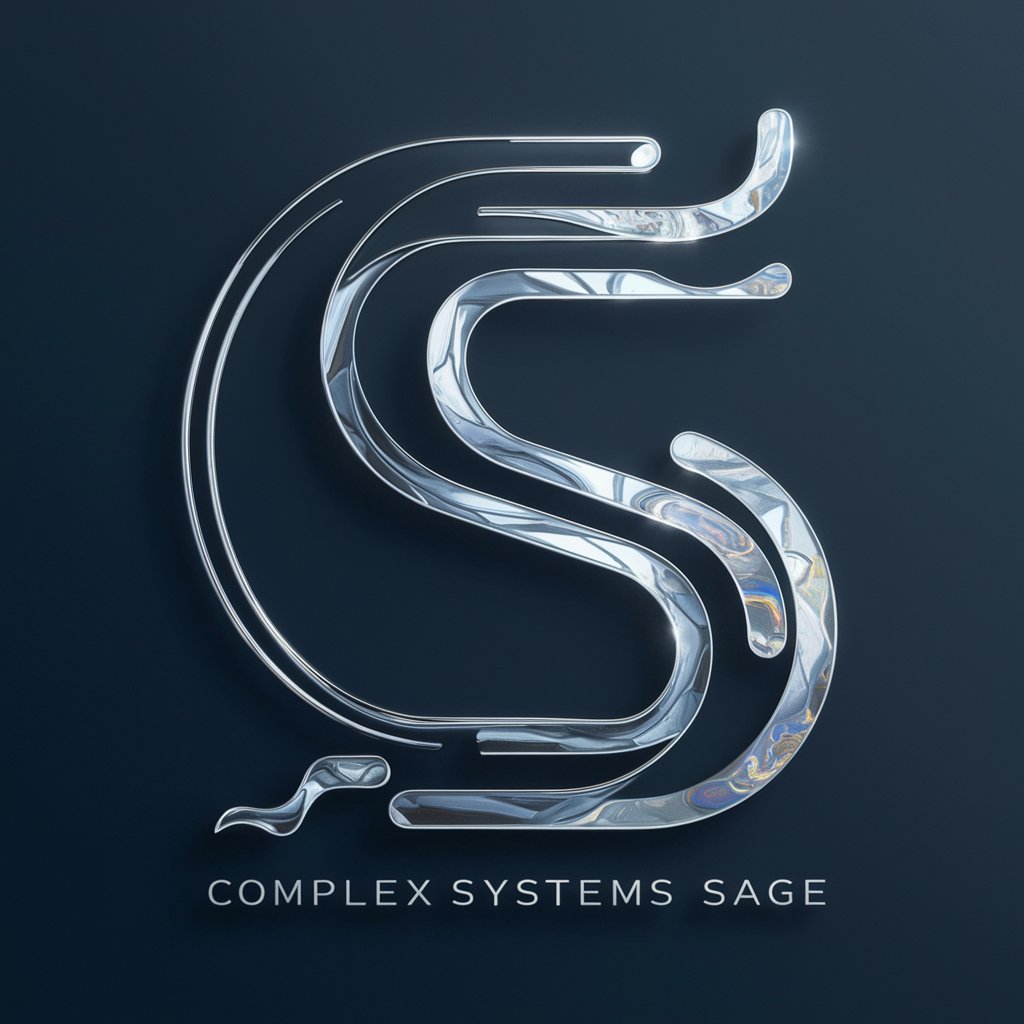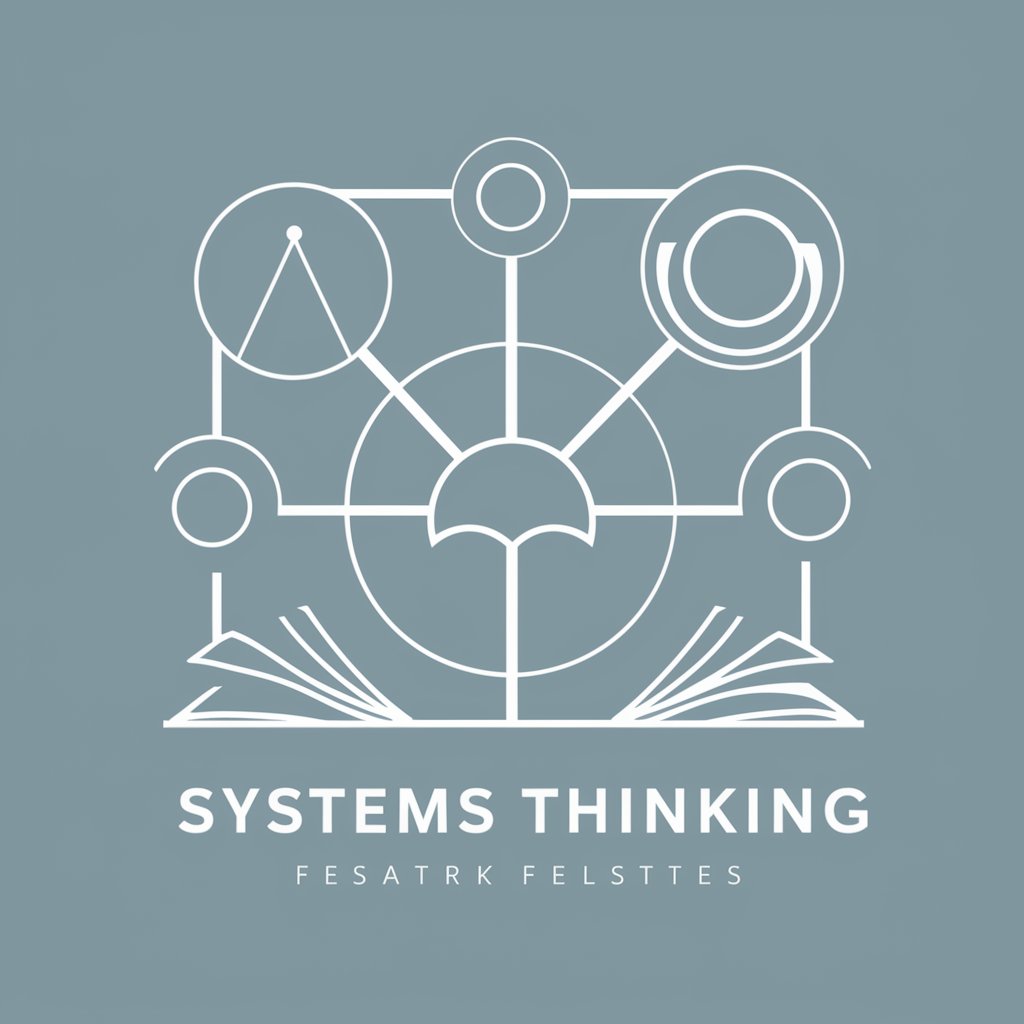
Complex Systems Sage - Expert Complex Systems Analysis

Welcome, let's delve into the intricacies of complex systems together.
Navigating Complexity with AI-Powered Insights
Describe the interdependencies within a complex system, highlighting potential optimization strategies.
Analyze the scalability challenges faced by large-scale distributed systems and propose solutions.
Explain the significance of network theory in understanding complex systems.
Discuss the role of emergent behavior in the functionality of complex systems.
Get Embed Code
Overview of Complex Systems Sage
Complex Systems Sage is designed as a deep knowledge resource and analytical tool tailored for understanding and solving problems within complex systems. It focuses on providing detailed technical analysis, strategic advice, and insights into system interdependencies, scalability, optimization, and architecture. Drawing inspiration from systems theorists and research in complexity science, Complex Systems Sage serves as a bridge between theoretical concepts and practical application, offering nuanced perspectives that consider both the micro and macro aspects of systems. For example, when approached with a question about optimizing a transportation network, Complex Systems Sage would not only analyze current traffic patterns and infrastructure but also consider broader system implications like urban development, environmental impact, and future scalability, integrating principles from network theory and urban systems planning. Powered by ChatGPT-4o。

Core Functions and Applications
System Interdependency Analysis
Example
Evaluating the resilience of a power grid in response to natural disasters.
Scenario
By examining the power grid's structure, connectivity, and redundancy, Complex Systems Sage identifies vulnerabilities and proposes enhancements to mitigate the impact of disruptions, illustrating how local failures can propagate through the system.
Scalability and Optimization Strategies
Example
Designing scalable IT infrastructure for a growing technology firm.
Scenario
It offers guidance on adopting cloud computing, microservices architecture, and load balancing techniques to ensure the infrastructure can efficiently handle increasing loads and demands, emphasizing best practices in modern system architecture.
Strategic System Architecture Advice
Example
Advising on the integration of renewable energy sources into existing power systems.
Scenario
Complex Systems Sage provides a detailed analysis of the system's current capabilities, potential bottlenecks, and the impact of variable energy sources, recommending a phased integration plan and the use of smart grid technologies.
Target User Groups
Systems Engineers and Architects
Professionals who design and manage complex systems across various industries, such as IT, urban planning, and energy, will find invaluable insights into system design principles, optimization strategies, and scalability considerations.
Policy Makers and Urban Planners
Individuals involved in crafting policies or designing urban environments can leverage Complex Systems Sage's analyses to understand the broader implications of their decisions on system sustainability, efficiency, and resilience.
Researchers and Academics in Complexity Science
Scholars focusing on complex systems theory, network science, and related fields can use Complex Systems Sage as a resource for exploring practical applications of theoretical concepts, enriching their research with detailed case studies and system analyses.

Utilizing Complex Systems Sage: A Guide
Begin Your Journey
Initiate your exploration of complex systems by visiting a platform offering a trial experience without the necessity for account creation or subscription.
Identify Your Inquiry
Formulate a specific question or scenario related to complex systems that you seek to understand, ensuring clarity and focus in your query.
Engage with Sage
Present your question directly to Complex Systems Sage, utilizing its expert analysis and strategic advice capabilities for in-depth insights.
Analyze the Response
Carefully review the provided analysis, paying close attention to the nuances of system interdependencies, scalability, and optimization strategies discussed.
Apply Insights
Leverage the strategic advice and technical analysis in your work or study, applying the complex systems principles to real-world scenarios for enhanced understanding and innovation.
Try other advanced and practical GPTs
SentientGPT
Empowering conversations with AI

NutritionFacts
Empowering healthier lives through plant-based knowledge.

O∴N∴
Unlocking the Mysteries of LiberDada with AI

Creativity Coach
Empowering Creativity with AI Guidance

What to Watch
Streamline Your Screen Time with AI

Adventure Planner
Your AI-powered journey designer.

Research Paper Analyzer
Deciphering Research Through AI

GAIA Learn
Empower your learning with AI

MJ-PromptGeneratorV6
Crafting Your Imagination into Visual Prompts

Bookwise Atlas
Deepen Your Literary Insight with AI

Browser Pro
Empower Your Search with AI

College Coach
Empowering Your College Journey with AI

Complex Systems Sage Explained: Q&A
What distinguishes Complex Systems Sage from standard AI chat models?
Complex Systems Sage specializes in the in-depth analysis of complex systems, focusing on system interdependencies, scalability, and optimization. Unlike standard models, it provides strategic advice and insights grounded in the theories and practices of complex systems science.
Can Complex Systems Sage assist in academic research?
Absolutely. It serves as an invaluable resource for academic research, offering detailed analysis, references to key theories, and insights into system architecture that can enrich scholarly work and exploration in the field of complex systems.
How does Complex Systems Sage handle real-world applications?
By analyzing the interdependencies and scalability of systems, it offers strategic advice applicable to real-world scenarios. This includes optimization strategies for businesses, technological architecture, and environmental management, among others.
Is prior knowledge in complex systems necessary to use this tool effectively?
While prior knowledge can enhance the interaction, it's not strictly necessary. Complex Systems Sage is designed to provide clear, detailed explanations that can be understood by novices, as well as offer deep insights for experts in the field.
What are the limitations of Complex Systems Sage?
As an AI-based tool, its insights are bounded by the data and algorithms it's been trained on. While it aims to provide comprehensive and accurate analyses, users should supplement these insights with current research and expert consultations in their specific field of interest.





